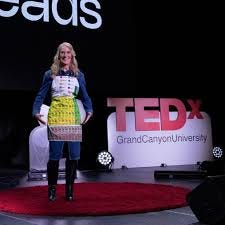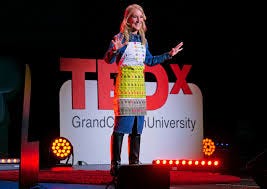Rebranding Chemistry: Why Science Needs More Stories, Not More Stress
How Dr. Colleen Kelley is changing the narrative — one comic, one molecule, one curious mind at a time
From our conversation with Dr. Colleen Kelley
📬 Subscribe to Thinkering Media
🌐 Explore more: kidschemicalsolutions.com
“Nobody told them chemistry could be fun — and that changes everything.”
— Dr. Colleen Kelley
If you’ve ever heard a student say, “I’m just not a science person,” you know how deep the fear runs.
And nowhere is that fear louder than in chemistry. It’s the subject that students dread and parents warn about — the class that even some educators try to get through with gritted teeth and fingers crossed.
But what if chemistry wasn’t the enemy?
What if it could be something joyful, story-rich, visual, and creative — from the start?
That’s exactly the future Dr. Colleen Kelley is building.
The Problem Isn’t the Science — It’s the Narrative
Chemistry doesn’t have a content problem. It has a branding problem.
And when Colleen shared how many parents tell their kids to “just get through it”, we realized the damage isn’t just academic — it’s emotional. Cultural. Generational.
We treat chemistry as an elite rite of passage instead of what it actually is: a way to understand the world. A lens for curiosity. A tool for truth.
So Colleen created Kids Chemical Solutions — a visual, story-first curriculum that teaches college-level chemistry to eight-year-olds.
And guess what?
They don’t hate it.
They ask to read more.
Thinkering, Not Just Tinkering
One of Colleen’s most powerful insights came in a single phrase:
“Science is always thinking first. Tinkering second.”
That’s the essence of thinkering. And why it matters so deeply in education.
We rush into hands-on labs before students even understand the questions.
We force activities without space for imagination or inquiry.
We prioritize action over insight — and then wonder why the learning doesn’t stick.
Thinkering slows us down just enough to think first — to draw, to wonder, to decode, and then to act with clarity.
Literacy Isn’t Just Language — It’s Structure, Sequence, and Story
Colleen talks about science literacy in layers:
Molecular literacy — imagining the 3D world of atoms and molecules
Dimensional literacy — seeing how form relates to function
Quantitative literacy — telling a story through numbers
Sequential literacy — the underrated skill of following steps and building logic
Her approach blends all of these — and makes them feel like play. Comics. Audio. Games. Stories. It’s a whole “kale in the smoothie” model, as she calls it: learning wrapped in joy.
Thought Experiments
What’s one topic students struggle with — and how could it be turned into a story?
Are students in your classroom encouraged to imagine before they experiment?
What learning fears have been passed down (by parents, teachers, culture) — and how do we rewrite those scripts?
What This Means for Teachers
Colleen’s work isn’t just for students. It’s a love letter to educators too.
She believes deeply that the key to long-term change isn’t just student curiosity — it’s teacher confidence.
If we want students to love science, we have to empower the people teaching it — especially in K–8 classrooms, where many teachers were never given that confidence themselves.
“Let’s build big brains — and not be afraid to make things harder. Kids can handle it if we help them believe they can.”
Watch, Reflect, Share
📬 Subscribe for more insight + strategy
🌐 Visit: kidschemicalsolutions.com






